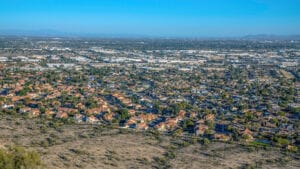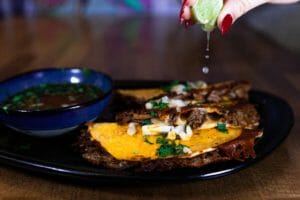As if Arizonans need another reason to beat the heat and escape to San Diego, 2019 marks an important milestone for the popular destination.
Old Town San Diego is more than just a popular tourist site. It was actually the first European settlement on the West Coast. The historic area is considered by many to be the birthplace of California. And Old Town’s rich history and culture will take center stage in 2019 as San Diego commemorates the 250th anniversary of the founding of “Alta California.”
Established in 1769, Alta California’s first settlement included Mission San Diego de Alcala and a neighboring presidio, originally built above Old Town. The area later developed into San Diego’s first “downtown,” and today Old Town San Diego brings to life the city’s rich Hispanic heritage from 1821 to 1872.
While Old Town San Diego teems with popular shops, restaurants and museums, its historic soul is best discovered by visiting its lesser-known sites.
Here are nine hidden gems to visit in Old Town San Diego that tell tales of the significant moments in the region’s early California history.
• The Old Presidio Historic Trail begins at the base of Presidio Hill at the corner of Mason and Juan Streets and ends at the Junipero Serra Museum. Spanish soldiers and families walked from the Spanish presidio two centuries ago to tend their gardens and livestock. Around 1820, families started to build houses beside their gardens along the trail, and “Old Town” was born.
• The Pattie Memorial (also known as “Witches Tower”) was once used as a Spanish guardhouse and jail cell to hold an American named Sylvester Pattie. A fur trapper who was accused of being a Spanish spy, Pattie died in 1828 while imprisoned at the presidio and is credited as the “first American buried in California soil.” A bronze memorial plaque in honor of Pattie and his trapper party was dedicated in 1931 on the site. The tower earned its “Witches Tower” nickname thanks to a brick pentagon design on the structure’s roof, the origins of which are unknown.
• A trio of statues on Presidio Hill provide insight into its early inhabitants. The Indian Statue is an expressive statue of a Kumeyaay brave that honors the native peoples of Alta California, while the Padre Statue, a bronze statue of Father Junípero Serra who established California’s 21 missions, recognizes the Spanish missionaries. The third statue of a Mexican Vaquero (cowboy) commemorates the early Mexican settlers to the region.
• Located on the grounds just below the Junipero Serra Museum, the Serra Cross is one of San Diego’s most prominent landmarks. Built in 1913 with tiles excavated from the site of the original presidio and mission, the cross is a monument to Father Junípero Serra and the first Spanish colonists to the region.
• Silent for many years, El Jupiter is an old brass cannon cast in 1783 in Manila that was once part of the Spanish defenses of San Diego. Displayed at the Serra Museum, the Spanish cannon faces seaward from the earthworks at the military crest of Presidio Hill. Guests can spot the Spanish royal crest on the cannon’s barrel above the trunnions.
• The El Camino Real bell marks the beginning of the Kings Highway that links California’s 21 missions and presidios. Set in front of Old Town’s historic El Campo Santo Cemetery, the bell has been in place since the early 1900s to mark the original route of the 700-mile-long “El Camino Real” from San Diego to Sonoma in northern California.
• Dating back to 1849, El Campo Santo Cemetery provides a glimpse into Old Town’s past. There are 477 bodies buried in the cemetery, and some are buried just outside its gate beneath the sidewalk and San Diego Avenue. Guests can spot the burial site from the brass “Grave Site” markers. Said to be haunted, the cemetery’s most widely seen apparition is a Native or Hispanic man dressed in 19th century clothing who floats above the ground.
• Casa de Carrillo is the oldest surviving house and oldest adobe building in San Diego; it is also one of the first houses built below Presidio Hill that made up the original Old Town settlement. Presidio Comandante Francisco Maria Ruiz built the house next to his pear garden in 1821 for his close relative and fellow soldier, Joaquin Carrillo, and his large family. Today, Casa de Carrillo is the clubhouse for the Presidio Hills Golf Course.
• Built in 1830, the San Diego House was originally a small adobe saloon and provision store, owned by Richard Freeman and Allen Light, the first two African-Americans to settle in Old Town. Set along Plaza De Las Armas, guests can step back into the 1800s and an old-school general store featuring rows and rows of jars filled with teas, herbs and spices. Today, the San Diego House is the setting for American House Coffee & Tea.
Information on events and activities related to the 250th commemoration of Old Town San Diego will be posted throughout the year at oldtownsandiego.org/250th.




